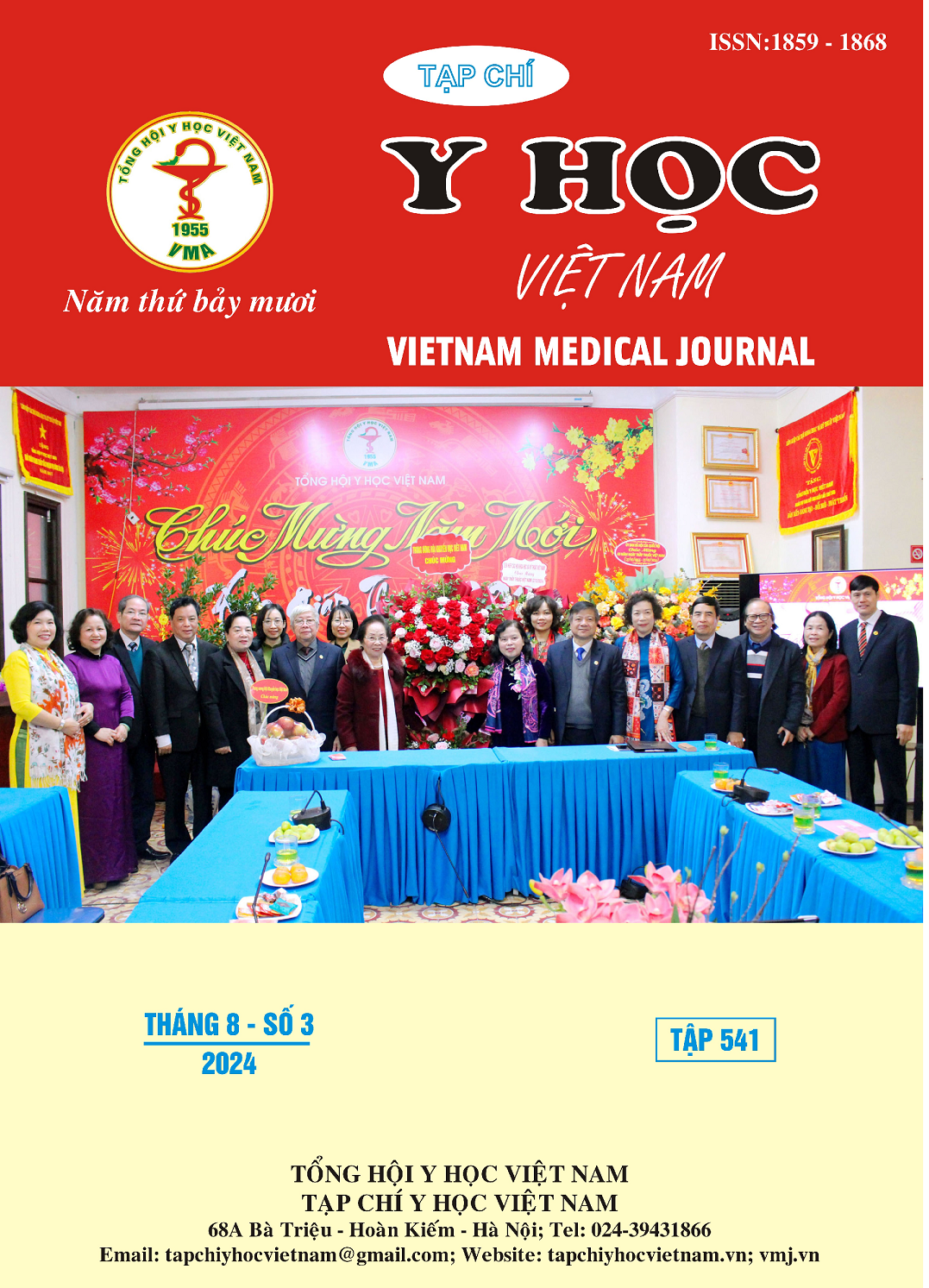FACTORS ASSOCIATED WITH SEVERE ACUTE POISONING IN CHILDREN AT CHILDREN'S HOSPITAL 1
Main Article Content
Abstract
Background: Acute poisoning is a common emergency in children. This is also one of the important problems that affects physical and mental development and even causes death in children. Research factors related to severe acute poisoning to help medical staff diagnose early and improve treatment quality. Objectives: Survey of factors related to severity in pediatric patients with acute poisoning at Children's Hospital 1. Methods: Cross-sectional descriptive study, both retrospective and prospective, on 294 pediatric patients with acute poisoning from June 2021 to June 2023 at Children's Hospital 1. Results: Severe poisoning rate: highest in age group > 12 years old (25%), women are higher than men; The highest level of severity is in the intentional poisoning group, the lowest is in the unintentional poisoning group; Regarding the cause: narcotics are the cause of the most severe poisoning (40%), followed by drugs (10.2%) and chemicals (7.2%); The severity rate was highest in the group with hospital admission time > 12 hours and there were no cases of severity in the hospital arrival time group < 1 hour. Conclusion: The rate of severe poisoning in children is still relatively high (9.5%). Therefore, it is necessary to be careful in preserving chemicals and medicines, pay attention to the expiration date of the medicine and use the medicine according to the instructions of medical staff; Do not use food that has been stored for a long time or of unknown origin and pay attention to the expiration date on packaged or canned foods; It is necessary to increase education about the harmful effects of narcotics and pay attention to mental health care in children, especially adolescents, to avoid cases of poisoning due to suicide. Some risk factors related to severe poisoning include age group, circumstances of poisoning, cause and time of hospitalization. From there, it is necessary to propagate and educate the community about common agents that can cause poisoning in children, how to provide first aid and handle poisoning situations, and the role of immediately going to the nearest medical facility when Children are poisoned.
Article Details
Keywords
children's hospital 1, poisoning, children, risk factors
References
2. Nguyễn Tân Hùng. Nguyên Nhân Và Kết Quả Điều Trị Ngộ Độc Cấp Trẻ Em Tại Bệnh Viện Nhi Trung Ương Giai Đoạn 2017-2020. Luận văn Bác sĩ chuyên khoa cấp II. Đại học Y Hà Nội. 2020.
3. Nguyễn Thị Kim Thoa. Đặc điểm dịch tễ học và lâm sàng ngộ độc cấp trẻ em tại bệnh viện Nhi đồng I từ 1997-2001. Luận văn Bác sĩ chuyên khoa II. Đại học Y dược TPHCM. 2002.
4. Persson H E, Sjöberg G K, Haines J A, et al. Poisoning severity score. Grading of acute poisoning. J Toxicol Clin Toxicol,. 36 (3). 1998. pp 205-213.
5. Gummin, David D., Mowry J.B., Beuhler M.C., et al. 2020 Annual Report of the American Association of Poison Control Centers’ National Poison Data System (NPDS): 38th Annual Report. Clinical Toxicology. 59 (12). 2021. pp 1282-1501.
6. Peden M. O.K., Ozanne-smith J. et al. World Report on Child Injury Prevention. WHO & UNICEF. 2008. pp 123-142.


